The idea of travelling to some far-flung place to make an adventure series may seem appealing at the outset, but the reality is that extreme film-making can be tough going for prolonged periods. “Never underestimate the risk you may be subjecting your crew to,” warns Richard Farish, co-founder of extreme filming specialist Expedition Media. “If you reach your destination and you haven't planned thoroughly then making a TV programme can quickly turn into a survival situation.”
Farish, with fellow cameraman Paul Mungeam, set up Expedition Media 18 months ago to cater for the growing demand for adventure programming. The company has developed a network of camera crew, fixers, production managers, directors and presenters who can cope with most challenges thrown at them.
“It's one thing to say you would like to film in the jungle, another to achieve it safely,” Farish says. “It's not just a case of putting on wellies and heading out there. After a day's filming you've then got to set up for the night. It engenders a real team spirit that asks people to go beyond what they would do on a normal working day.”
Farish advises producers to contact other specialists for different aspects of the project's preparation. These include Remote Trauma which provides pre-trip training as well as location medical support; expedition management group Trekforce Worldwide and Nomad for vaccination clinics and medical kit supply.
Trekforce runs overseas gap year programmes but has supported, among others, Ginger TV's Jack Osborne's Adrenaline Junkie and Ricochet's Extreme Dreams. Tribe presenter and explorer Bruce Parry became a Trekforce expedition leader after leaving the Royal Marines and was instrumental in developing its TV business. He led a team of eight youngsters and a BBC crew for CBBC series Serious Jungle which led to the creation of BBC series Tribe, and Parry's debut as a presenter.
There's no denying the expertise of these organisations, many of which are led by former members of the armed forces, in guiding productions safely through the perils of an extreme overseas shoot. However expedition managers, leaders, medics and specialist crew, not to mention spares for everything from tyres to communications equipment can add considerably to the budget.
“The original budget for [Lion TV's] The Hottest Place on Earth hadn't quite taken account of the scale of logistical and health and safety support we needed,” explains production manager Patricia Chacon. “We were not only venturing into arid desert but also planning to film inside a volcano with potentially hazardous gases. We were also in a disputed border region dotted with landmines where rebels recently kidnapped a group of European tourists.”
This was Chacon's first project of this nature and she admits, “there were certain areas where I didn't know where to begin. It was clear we needed to partner with someone with this experience.”
There was no shortage of suitors but she eventually plumped for a combination of Expedition Media for crew with Remote Trauma as risk assessors.
Risk assessment, another insurance necessity, is the main plank of the planning process and a protocol which the commissioning broadcaster will pay serious attention to.
“You perform risk assessments even if you're filming in the local park but for extreme situations you'll need to prove to the broadcaster that you've covered all the bases,” says Chacon. “Communication is perhaps the most important. How will the team contact London in an emergency? What are the back-up comms plans? What is the procedure if contact is broken?”
Risk assessments will detail a medical evacuation plan with red, green or yellow priority codes for each eventuality. Ideally a recce is used to assess the terrain and the locale's facilities in advance.
Local knowledge
However, “you may not get permission to visit certain areas more than once”, says Raw TV director Dimitri Doganis who tends not to use expedition management companies having gained sufficient experience filming documentaries like Banged Up Abroad in countries such as Uganda and Peru. “That's why local knowledge is critical.A lot of hostile environment filming is about finding people on the ground who you can trust and rely on. That is the most important factor in keeping people safe.”
There's certainly been a sharp increase in demand for hostile environment and emergency first aid training (HEFAT) courses - rigorous week-long programmes run by firms such as Centurion and Pilgrims Group - which for between£1,500 and£2,000 teach people how to identify and assess risk. Obligatory for all BBC staff heading to a conflict and a requirement of most insurers, HEFAT courses cover every-thing from using body language to get away from an angry crowd to what to do if you find yourself in a minefield. There are even hostage-taking simulations.
Pilgrim Group director of business development Simon Dorset says: “In recent years more places around the world have become less stable whether through political, terrorist, or civil unrest but also as a result of natural disasters. Combined with the dramatic growth of news reporting pushing ever closer to the frontline or into remote areas, the need to prepare significant numbers of media personnel to operate safely in such environments has challenged many in the media world.”
However, if a production is moving into a war zone then the stakes increase considerably. Even with a HEFAT course most producers won't countenance sending rookies to a “hot” conflict.
Says October Films head of current affairs Julia Barron: “I regularly get pitches from people interested in going to Afghanistan but no bona-fide broadcaster is prepared to engage in gung-ho filming where journalists are a target.”
She adds: “You don't send people to hot wars who haven't had that kind of experience. A lot of freelance and agency cameramen learn about conflict management on lower level conflicts. Israel's West Bank is considered a good training ground.”
Many such camera-ops are former military personnel who have swapped guns for a camera. “Some are brilliant cameramen and know exactly how to react to incoming and outgoing fire,” Barron says. “You go to war zones with a range of body armour and first aid trauma packs but you need to have the training and confidence to use them.”
Barron helped produce documentaries presented by journalist Sean Langan for Channel 4's Dispatches. During the most recent project last June, Langan was kidnapped and later released by the Taleban.
“Insurance is naturally very high for these projects and it's graded acutely to your track record,” Barron says. “We've never lost anyone and we have a good relationship with our insurers.”
Risk assessments for visits to war zones are meticulous and often involve on-the-ground intelligence gathered by private security forces. The BBC has its own high risk team which provides it with daily updates.
“Filming Iraq: The Betrayal last March Channel 4 required us to detail all our contingency planning,” explains Barron. “We needed to show exactly where and with whom we were every minute of the day including details of the tracking systems on our security guards in case of kidnap.”
Even a programme as seemingly unhazardous as Optomen's The F Word can require preparation for extraordinary situations. In an episode filmed in May 2007 Gordon Ramsay dived for king crab under the ice in northern Norway. With him was underwater cameraman Dan Burton.
Specialist crew
“You're dealing with extremely cold water in an overhead [ice] environment and possible entrapment,” says Burton. “You need to examine every angle and isolate risk. It requires another diver under-water and a back-up diver on the surface, a leader supervising and ideally a medic.”
Burton, a one-time member of the British free-diving (breath-holding) team, has shot footage for Discovery, the BBC and National Geographic to depths over 200m. He has custom-built watertight housing for cameras and is trained to use rebreather units which recycle air rather than expelling it like scuba gear.
“Rebreathers are becoming popular for filming wildlife underwater,” he explains. “You can stay down for longer without bubbles getting in the way.”
Geoff Lee is one of a handful of aerial camera operators in the UK specialising in filming from jet planes. His work has featured in BBC series Wild Weather and aviation projects produced by Impact Image for Eurofighter, BAE Systems and at the RAF.
“Everything is totally scripted before we get airborne,” says Lee. “I liaise with the director and the pilot and draw up a shot list of what we're going to achieve. I can handle myself in the cockpit and talk to the pilot throughout the shoot.”
The key to the job is physical fitness he says. “I'm required by the RAF to have an annual medical. Every six months we perform a ‘wet' drill by ejecting into the sea. Every five years I'll take a hypoxia test which means being put in a chamber at 20,000 ft and taking your oxygen mask off so that, should you lose cabin pressure in a ‘real' situation, you can recognise the symptoms and remedy it quickly.”
Expedition Media's Farish concludes that while the onus is on pushing the envelope, there are limits. “Extreme filming is, by its nature, extreme,” warns Farish. “You're putting yourself and others at risk so it pays to remember that you're just making a TV programme.”
Dangerous television: Three risky propositions
Chris Ryan's Elite Force
8 x 60-minute Bravo/Discovery EMEA
co-production produced by October Films
Transmits autumn 2008
October was granted rare access to some of the world's toughest special police squads including Rio de Janerio's feared BOPE unit, Colombia's Junglas force and the Sunkar special forces in Kazakhstan. The officers involved regularly face bullets, bombs and bloodshed at the hands of organised criminals.
“We know we're going into ungoverned, chaotic urban areas, facing drugged up gun-toting gang members. Although the police can protect us up to a point we've got to take care of ourselves,” says Tim Pritchard, series director/producer and one of four crew. “We often found ourselves better protected than they were. In Brazil the officers wanted to buy our helmets and flak jackets.”
All the crew had taken hostile environment courses while Pritchard previously escaped serious injury while embedded with the US forces filming a documentary in Iraq.
Oceans
8 x 60-minute BBC Vision Studios /Discovery production for BBC2
Transmits autumn 2008Producer Helen Thomas was the only one of the crew not schooled in diving for this exploration of the world's seas.
“All our presenters (including Paul Rose and Philippe Cousteau Jr) and crew were experienced divers,” she says. “Where they needed more specialist qualifications - such as cave diving - we made sure they received training.”
The production experience all temperatures from the extreme cold of the Arctic to the more temperate Red Sea with a safety plan ready at all times.
“We always needed access to a recompression chamber in case of an emergency whether that was onboard the boat or via helicopter or, when neither was possible, a plan to recompress back under the water,” says Thomas. In the Bahamas a team filmed inside a “black hole” where the water contains no oxygen and a layer of toxic bacteria. “You must always expect something to go wrong and plan for it,” she says.
The Hottest Place on Earth
3 x 60-minute BBC1/BBCW/Discovery
co-production produced by Lion Television
Transmits autumn 2008
The Danakil desert in northern Ethiopia is home to the heavily armed, nomadic Afar people. Daily temperatures in this landscape, torn apart by earthquakes and volcanic eruptions, can reach 60°C. The area also happens to be a disputed border zone with Eritrea, populated by soldiers and landmines.
Lion contracted risk management team Remote Trauma to lead the project on location. “They had a satellite phone and called me every day at 3pm,” says production manager Patricia Chacon. “If I didn't get the call I was to contact the British Embassy and the Ethiopian authorities. “It was a tough shoot, with some of the crew trekking and four-wheel driving more than 120 miles in demanding conditions that caused them to drink 10 litres of water a day each. “We needed climbing expertise to film inside a volcanic fissure. While the chief climbing advisor said it was doable he needed two extra climbers for safety,” says Chacon.


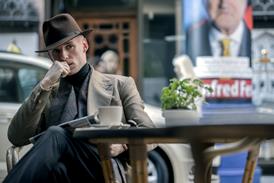




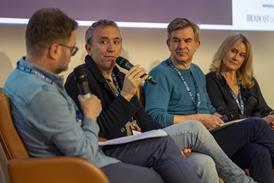
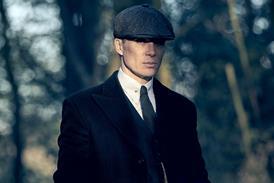



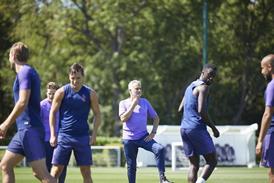
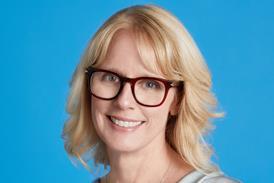
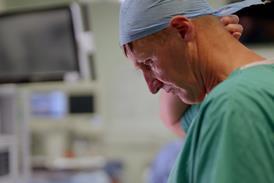
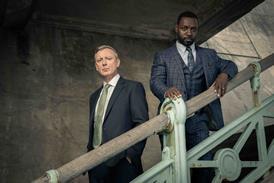
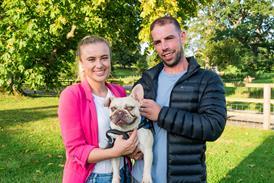












No comments yet